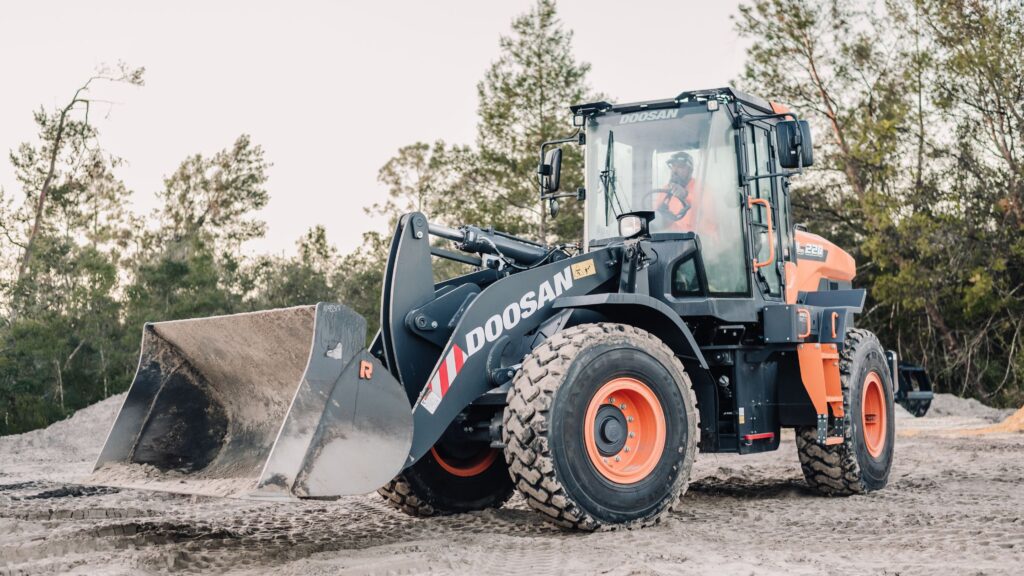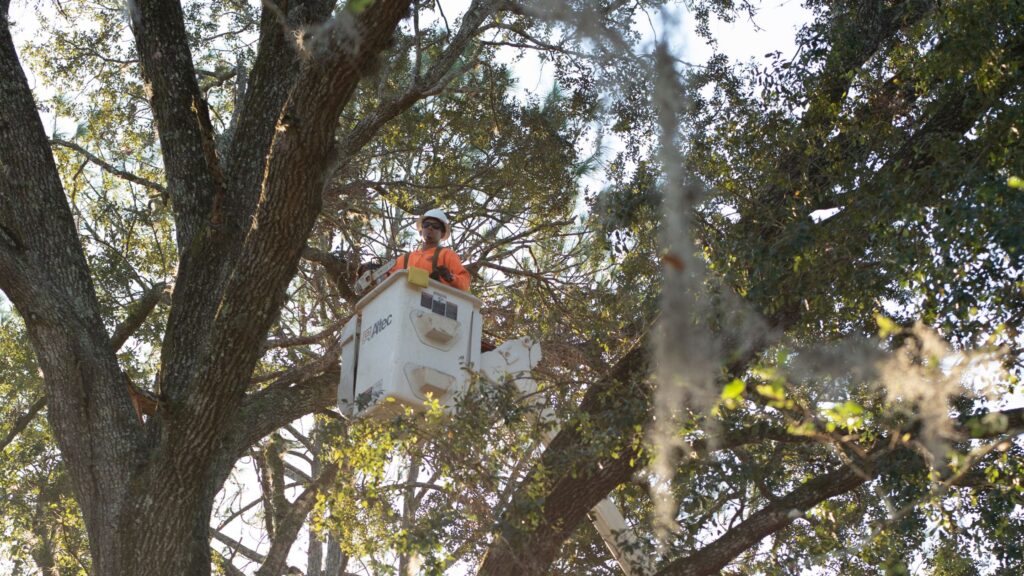Want to keep the trees on your property healthy and thriving? Regular maintenance is the key to longevity and safety. When it comes to trees, many people don’t realize the importance of routine upkeep. After all, many trees live long and healthy lives in the forest without maintenance, so why invest in caring for the ones in your yard?
There are several important reasons why it’s necessary to inspect and prune your trees on a regular basis. Sick or unhealthy trees are more likely to have dying branches, which can cause serious injury or damage to people and property. Additionally, sometimes sick or dying trees need to be removed. Depending on the size of the tree, removal can be very costly. Regular maintenance helps eliminate branches and prevent disease, which can prevent accidents and also help you avoid expensive tree removal bills down the road.
So how do you know if your trees need maintenance work? Here are some ways to find out for yourself:
1. Signs Of Fungal Disease
Fungal infections can dramatically shorten the lifespan of a tree, so if you notice fungus growing, you’ll likely want to have an arborist come to scope out the situation.
Fungal diseases are common, and in some cases, they’re difficult to prevent. Winds can transport fungal spores through the air and hard rains can splash spores up onto the base of trees. Contaminated gardening tools can also spread fungal infections from one area of your yard to another. While trees are able to fight off most infections, sometimes they can’t – especially if the tree is old or has a weakened immune system.
Abnormal growths, discoloration, odd coatings, and sogginess near the trunk of the tree are all signs of rot caused by fungal infections. Some common types of tree fungus include:
- Oak Root Fungus – If you see white mushrooms that sort of look like shelves emerging from the base of the tree, this could be Oak Root Fungus. These most commonly emerge in the fall and winter around Central Florida.
- Laurel Wilt – A deadly fungus that’s very common in Florida and results in wilted green leaves in the tree’s canopy and dark streaks underneath the bark. This fungus can spread rapidly through an area and it’s difficult to treat if it’s not caught early.
- Artist’s Conk – A brown and white fungus that grows from the base of the tree and often infects tree wounds. Over time, Artist’s Conk can transform into white rot.
- Dyer’s Polypore – A brown, fan-like fungus that is often larger than 10 inches in diameter. This fungus can quickly lead to brown rot and should be removed as quickly as possible.
If you notice any signs of these fungal infections, it’s important to call a professional right away. The more time they have to spread, the less likely the tree will survive.
2. Dead Branches Or Broken Limbs
It’s normal for branches to die and fall off during a tree’s lifetime, but if you’re starting to notice an abundance of them, it’s probably time for maintenance. Removing dead branches is important for several reasons.
The first is safety. Dying branches are a major risk, especially when located above a home, roadway, or sidewalk. The last thing you want is to risk injury to people or damage to property.
Dead or dying branches can also create an entry point for pests and diseases. Trees with many dead branches are more likely to develop a life-threatening infection.
Eliminating dead branches also helps the tree to preserve water and nutrients. Trees may still attempt to route resources to the dead branch in an attempt to revive it. As a result, eliminating dead branches allows the tree to properly allocate its resources to the remaining healthy branches.
Sometimes dead branches are easy to spot, but other times it’s not so simple. An easy way to tell if a branch is dead is by attempting to snap off a piece at the very end (if you can reach it.) A dead branch will snap easily, while a live branch will be much more difficult to snap.
If more than 10% of a tree’s branches are dead, maintenance is probably necessary. If more than 25% of the tree’s branches are dead, call a professional right away as the tree’s life might be at risk.
3. Visual Damage After A Storm
Severe weather can adversely impact trees in many ways. High winds can break branches or uproot trees altogether. Lighting strikes can damage trees and even cause them to catch on fire. Long periods of intense rain or flooding can actually lead to root suffocation.
Tree maintenance is highly recommended after any severe weather event. Pruning and inspection can help put the tree on the road to recovery and prevent other problems down the road. The sooner your tree receives treatment, the better chance it has to survive. Regular tree maintenance also helps trees better withstand severe weather events when they do happen.
4. The Canopy Is Too Dense
A tree’s canopy refers to the upper layer formed by mature tree crowns. As trees grow, they continue to sprout new branches and these canopies can become dense and overgrown.
Dense canopies can be nice for shade, but blocking out too much sunlight can also be a problem. Overgrown canopies prevent the sun from reaching the lower portion of the tree and any grass or plant life near the base of the tree, which can cause nearby plant life to die. Dense canopies can also block airflow, which is important for preventing disease. If the canopy is looking too dense, you’ll need a professional arborist to help thin it out.
5. Non-Optimal Growth
Tree branches don’t always grow in the most optimal way. Sometimes branches can grow into one another and sometimes branches from one tree can begin to cross paths with branches from another tree. In other cases, weak branches begin to hold more weight than they’re capable of or branches can grow into power lines, homes, chimneys, or other structures.
If you notice any signs of non-optimal growth, you’ll need to have your tree pruned to ensure any future growth is healthy and in the long-term interest of the tree and the surrounding property.
How Regular Tree Inspections Can Help
While the signs above can help you spot problems, tree-related issues aren’t always obvious. The best way to ensure your trees stay healthy is to have them inspected by an ISA-certified arborist every year. A qualified tree inspector will be able to conduct a thorough examination, identify problems, and in many cases, help to treat the issue. Early detection is the best way to minimize safety risks and reduce the chances of disease.
While annual tree maintenance is important, not every season is ideal for pruning. Arborists can inspect a tree any time of the year, but most only recommend pruning during the winter months (December through March). This is because trees are mostly dormant during this period, and any wounds received as a result of the pruning will be quick to close as growth begins in the spring.
Always Trust A Professional For Tree Maintenance
While pruning a tree might seem simple, it’s important that you only allow an ISA-certified arborist to do this work on your property. In many cases, a tree’s life and longevity are dependent on the ability to identify and remove dead branches, balance the canopy, and treat diseases. Unless you’ve completed all of the requirements outlined by the International Society of Arboriculture (ISA) to become a certified arborist, then you don’t have the skills and experience needed to perform this work.
Additionally, tree maintenance is very dangerous work, and tree removal is even more dangerous. Without the knowledge or the right equipment, you could fall and seriously injure yourself. When attempting to remove a branch or a tree, you could cause serious damage, injury, or death to surrounding people or property. As a result, it’s very important that you never attempt to do this type of work on your own.
At CFB Outdoors, we’ve been in the tree maintenance business for several decades. We have three ISA-certified arborists on staff who are more than capable of providing annual inspections, pruning services, and putting together long-term treatment plans to maximize the longevity of the trees on your property. If you’re noticing signs that your trees need maintenance or simply want to schedule an annual inspection, contact us today.



